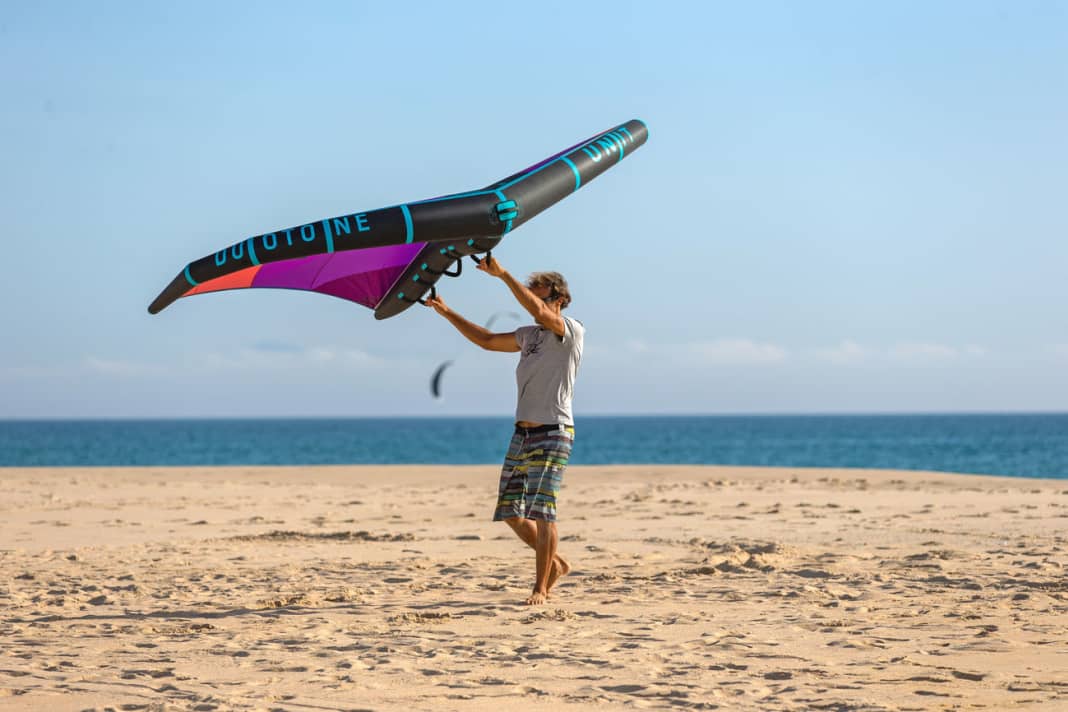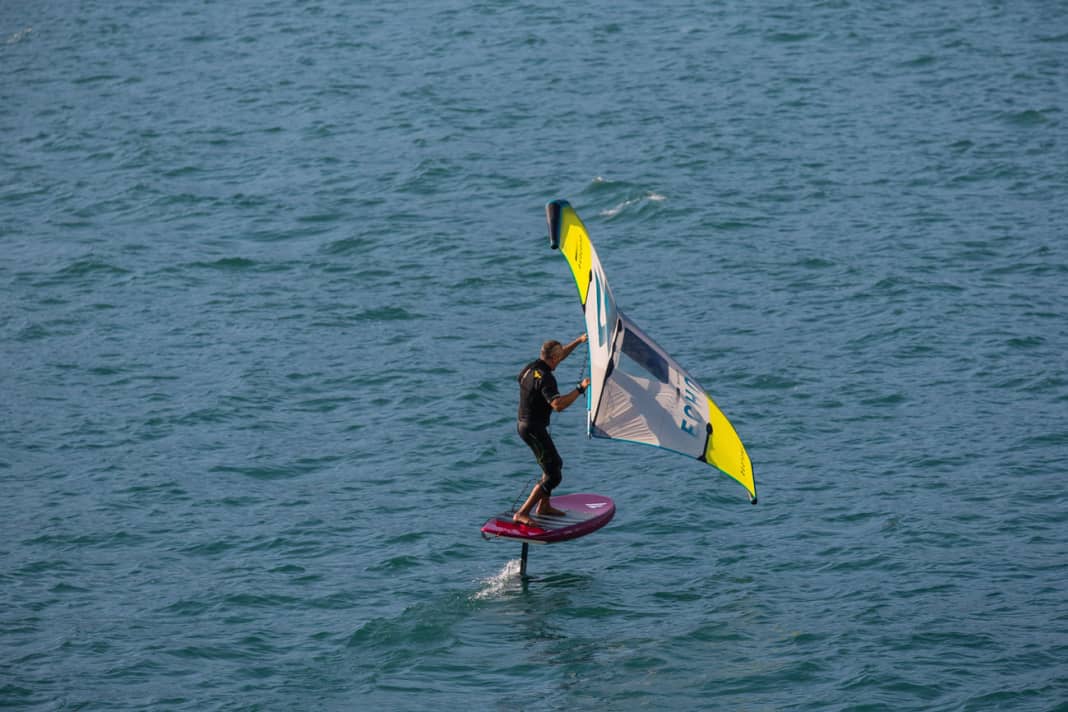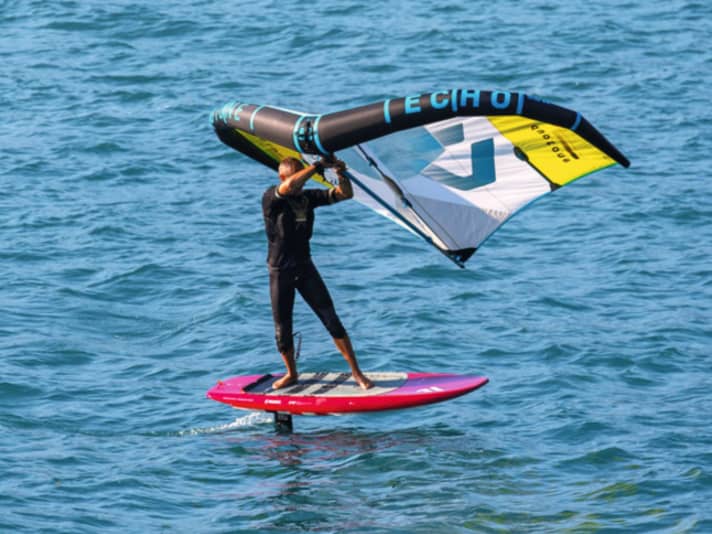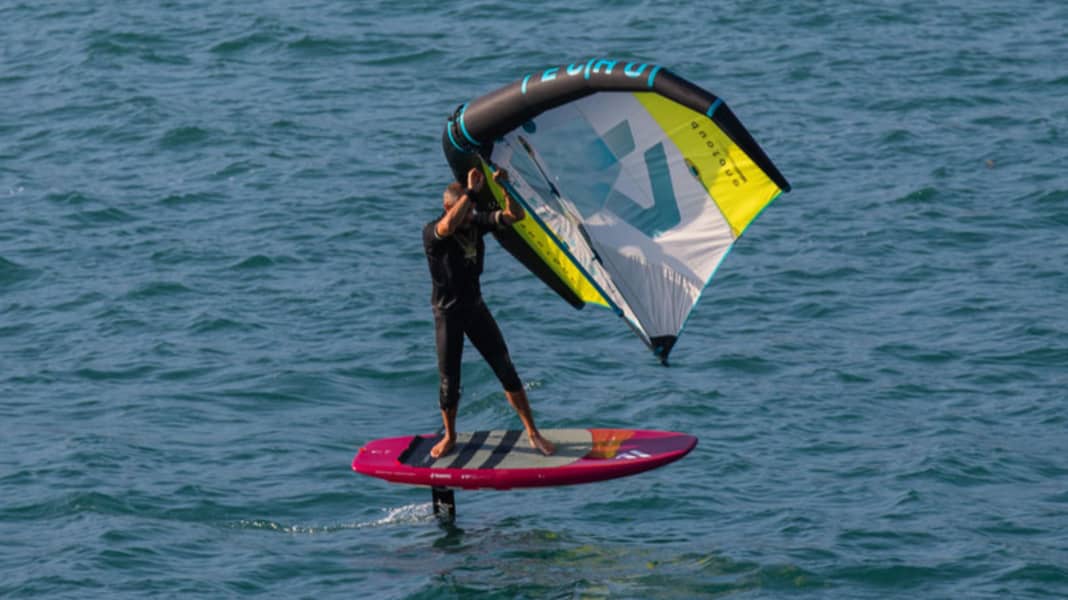Anyone attempting a jibe with the wing for the first time is bound to have a knot in their brain - but it quickly unravels. The easiest way to get to grips with a foiled jibe is to use a large foil board that offers enough buoyancy and width so that you can follow the principle of the wing. "initiate, set down in a controlled manner and finish the rest with water contact" can proceed.
Preliminary exercise for jibing: Re-gripping on land
Before you try out the jibe on the water, you should take some time on land to try out the grip technique extensively. Especially with wings with narrow handles, it can happen on the water that you don't hit the handle immediately when changing hands - practice makes perfect here. You can find the most important steps of the preliminary exercise in the following picture gallery.





The foiled jibe
To learn the foiled jibe, it is essential to use a board with sufficient excess volume and width. This way, you can approach it slowly and finish the jibe dry even if you unintentionally drop off in the turn - which will be the rule at the beginning.
We have summarised the most important key points of the wingfoil jibe for you below. Click through our picture gallery!






Crucial point: "Set wing neutral"
One of the most common problems when learning the jibe is that the nose of the board falls off at the moment you reach round it. This is usually because the wing is flying too much "in front of you" and not "above you".

Note: Pull the wing over your head to windward with your front hand before reaching round! Your head is almost under the front tube at the moment you reach round.
There is a video tutorial on jibing, including all the preliminary exercises and typical mistakes HERE on our YouTube channel. Take a look!
Subscribe to the channel now and never miss a tutorial again!

